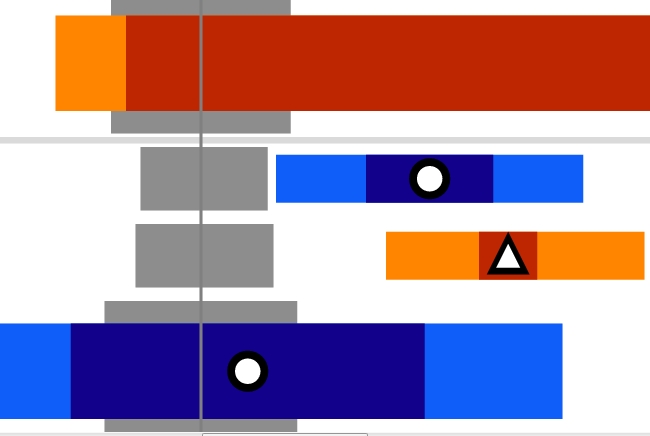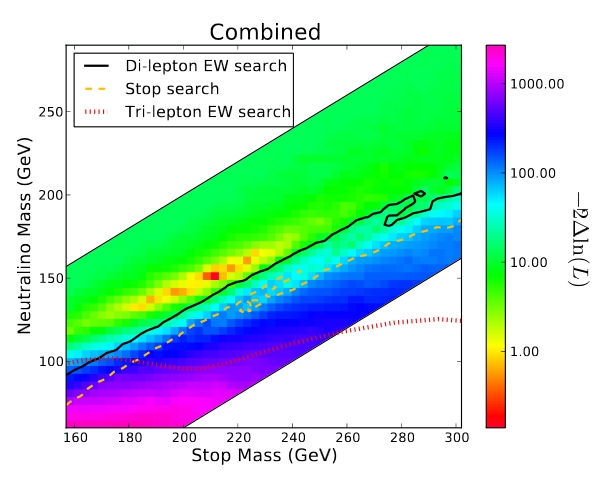W bosons are the massive particles discovered in 1983 by Carlo Rubbia at the CERN SppS collider. They govern weak interactions, the ones responsible for radioactive decays as well as for some of the processes going on in the stars' cores. W bosons can be produced in pairs through quite standard electroweak processes in particle collisions if the available energy is sufficiently high. And indeed, the pair production of W bosons has been studied since the late nineties at the Tevatron, at the LEP II collider, and then of course at the LHC.
The fact that the Higgs boson may decay into WW pairs is one extra motivation for studying these processes, but in earnest they are quite interesting by themselves. Already the sheer production rate of WW pairs at high energy is a topic on which one could write volumes - the cross section of the process would grow beyond what can be considered logical (the "unitarity bound") if there were no Higgs boson to damp down the rate. But let me stick to today's topic: SUSY!
It turns out that a paper titled "Stop the ambulance!" was submitted to the Arxiv just one week ago. In it, authors Jong Soo Kim, Krzystof Rolbiecki, Kazuki Sakurai, and Jamie Tattersall argue that the rates of WW production published by ATLAS (in 7-TeV collision data) and CMS (in 7- and 8-TeV collision data) are all above the Standard Model prediction, and go on to explain how a very simple SUSY model including light stop quarks, charginos, and neutralinos could fit the data much better than the Standard Model does.
The authors of 1406.0858 produce a fit of SM+simplified SUSY which has a maximum likelihood exceeding the SM one by 13.3 units - corresponding to an over 3-sigma preference of the data for the SUSY hypothesis. A first hint of Supersymmetry after all ?
The matter is serious, as the WW production process occurs in LHC collisions mainly by quark-antiquark annihilations, for which uncertainties are small. It is a very simple electroweak process and SM calculations just cannot be much off. But of course, with dozens of measurements of production rates by the LHC, finding one off cannot be too exciting, can it ?
Apparently, it can. In fact, the only missing piece to the picture of high-energy WW production cross section measurements, given the LHC Run 1 data, was the ATLAS 8-TeV WW result. And it has just been shown at ICHEP: ATLAS measures the cross section at 71.4+-7.5 pb, considerably higher than the theory prediction (57.3 pb) [For comparison, a year ago CMS published its measurement at 8 TeV as σ(WW)=69.9+-6.9 pb, using only a few inverse fb of 8 TeV data; the result is more precise than the new ATLAS one, but it is systematics-dominated as the competitors', so it is unlikely that CMS will try to improve it soon]. A zoom-in view of the new ATLAS measurement is shown below - I was intrigued by the choice of colours and symbols enough to want to zoom into the new measurement (the third line from top).

Artistic, isn't it ? The grey bars are SM theory predictions, and the orange one is the new ATLAS measurement. Okay, yes, artistic maybe, but more interesting is the whole graph, which collects many different measurements by ATLAS. See below.

The graph is busy, but you do not need to go through that whole list. The point is that we have some consistent deviations by the two LHC experiments with respect to the Standard Model; and a rather simple Supersymmetric scenario which appears to fit these deviations effectively. Even more significant is the fact that the model published by the SUSY phenomenologists came before the latest ATLAS result; so it is to some degree a "confirmation" of the picture drawn by the theorists.
The graph below, taken from the preprint, is rather striking. It is a "temperature plot" showing the difference of the likelihood from the value of the best fit. Values close to zero are in red, and they indicate points of parameter space which give a good fit to the considered ATLAS and CMS measurements. On the horizontal axis you see the stop mass, on the vertical axis the neutralino mass. There is a nice band of red points around M_stop=200, M_neu=150 GeV which is out of the current excluded regions of parameter space (lying below the black, yellow, and purple curves).

Despite the inspiring graph and the red streak of high-likelihood values lying entirely in non-excluded regions, the significance of the departures from SM rates is so far still too weak to claim anything; and yet, as I said above, some SUSY phenomenologists are not going to bed tonight, preferring to check their models than sleeping over it.
What can I say... If they're roses, they will flourish. I very much hope they will, but I remain sceptical. It ill be very interesting to see if ATLAS and CMS will make an effort to investigate more in detail the SUSY scenarios which would give exactly the observed excesses. Of course, the LHC SUSY searches are already extremely wide-range, but some corner of phase space might still be looked at in more detail... And needless to say, the 13-TeV LHC run of 2015 is getting closer. So stay tuned for what could fizzle out or become the discovery of a young but already eventful century!



Comments